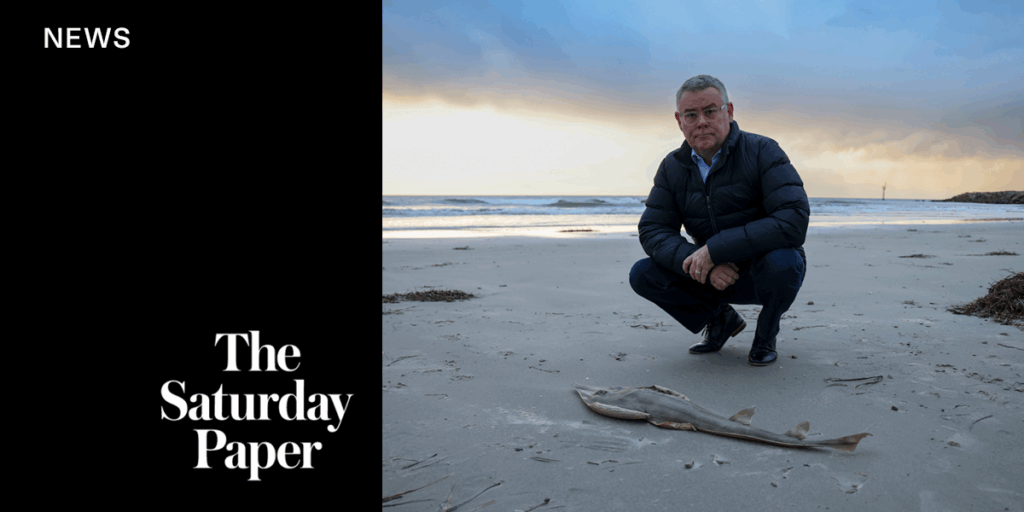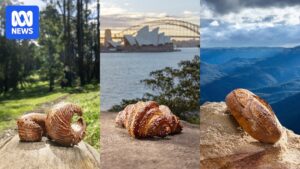
For the past four months, South Australia has been grappling with an ecological disaster along its coastline. A harmful algal bloom, primarily composed of Karenia mikimotoi, has been wreaking havoc on marine life, affecting a wide range of species such as rays, sharks, and cephalopods. This environmental crisis underscores the harsh realities of climate change as the bloom continues to spread with the currents and prevailing conditions.
In mid-March, surfers on the Fleurieu Peninsula reported stinging eyes, blurred vision, and persistent coughing after emerging from the water. The beaches at Waitpinga and Parsons Beach were covered in discolored foam, and dead marine animals, including fish and leafy sea dragons, washed ashore. By May, the situation had worsened, with sharks appearing unusually close to the shore, exhibiting sluggish and sickly behavior. A great white shark that washed up on Henley Beach could not be saved despite efforts by concerned beachgoers.
The bloom has now extended from the northern coast of Kangaroo Island to the top of Gulf St Vincent, affecting an area of approximately 4,500 square kilometers—nearly twice the size of the Australian Capital Territory. The bloom’s spread has been exacerbated by a combination of factors, including the 2022-23 floods that introduced an unprecedented amount of fresh water and nutrients into the ecosystem, and a subsequent upwelling that brought additional nutrients to the surface.
Climate Change and Marine Heatwaves
Professor Mehdi Doroudi, chief executive of South Australia’s Department of Primary Industries and Regions (PIRSA) and co-chair of a taskforce addressing the bloom, identifies a persistent marine heatwave as the most significant factor. “Since September, the local waters have been up to about 2.5 degrees warmer,” he explains, emphasizing the ecological impact of this temperature rise.
The world’s oceans absorb about 90% of anthropogenic heat, with the Southern Ocean experiencing the largest increase in heat storage over the past two decades, according to a 2023 UNSW Sydney study.
While cooling winds arrived towards the end of May, hopes for a natural dispersal of the bloom were dashed as a storm surge caused further damage. Dead marine life, including cuttlefish, rays, and various fish species, has been found along all of Adelaide’s city beaches. Although sea surface temperatures near the shore have decreased, deeper waters remain one to two degrees warmer than average.
Impact on Marine Life and Human Health
While Karenia mikimotoi is the dominant species, other similar species may be present, and brevetoxins harmful to humans have been detected at Yorke Peninsula oyster farms. “Shellfish are the best bio-indicators in the ocean regarding the movement of the algal bloom and any bio-toxins,” says Doroudi. Consequently, several shellfish harvesting sites have been closed for testing, and PIRSA has implemented strict safety standards.
Algal blooms can be lethal to marine life by severely reducing oxygen levels in the water, suffocating gilled animals, and causing pathological symptoms through toxins. Citizen scientists have been actively documenting the impact, with the SA Marine Mortality project collecting over 14,000 observations of about 450 species. “This data is invaluable for researchers and government discussions,” notes Brad Martin, project administrator.
Economic and Environmental Consequences
The algal bloom poses significant threats to South Australia’s fishing and tourism industries, with many coastal communities relying on these sectors for their livelihoods. The loss of juvenile animals is particularly concerning, and while fishing restrictions have not yet been announced, assessments are ongoing. The state government has waived fees for commercial fishers from April to June 2025, a gesture valued at $500,000, but recovery could take years, as evidenced by a similar event in Wellington Harbour, New Zealand, in 1998.
“Some species will recover quickly, while others may take years,” Martin explains. “The focus is on ecosystem restoration, recovery, and resilience.”
Efforts to restore shellfish reefs and support kelp forest and seagrass habitats are underway, with significant community interest in coastal restoration. However, these initiatives require adequate resources to be effective.
Political and Social Reactions
As the crisis unfolds, conspiracy theories have emerged, blaming Adelaide’s desalination plant, sand trucking to urban beaches, and even Chinese warships. SA opposition leader Vincent Tarzia has called for a royal commission, which the state Labor government deems unnecessary. “This phenomenon is undoubtedly a result of climate change,” asserts SA Environment Minister Susan Close, emphasizing the need for public awareness of the changing marine environment.
Activists have also responded, with Extinction Rebellion staging protests during the Illuminate Adelaide festival, highlighting the link between climate change and ocean health. More actions are planned, including a “Hands Across the Sand” event led by Greens Senator Sarah Hanson-Young, who has called for a national disaster declaration, a move supported by the state government.
Federal Environment Minister Murray Watt recently visited the state to assess the damage, announcing $14 million in support for fishers, community awareness, and scientific research. The state government has pledged to match this funding. However, critics argue that these efforts are insufficient, especially given Watt’s recent approval of an extension for a gas processing plant in Western Australia, which could contribute significantly to future greenhouse gas emissions.
As South Australia confronts this ecological crisis, the focus remains on understanding the full impact of climate change on marine environments and implementing effective strategies for recovery and future resilience.






